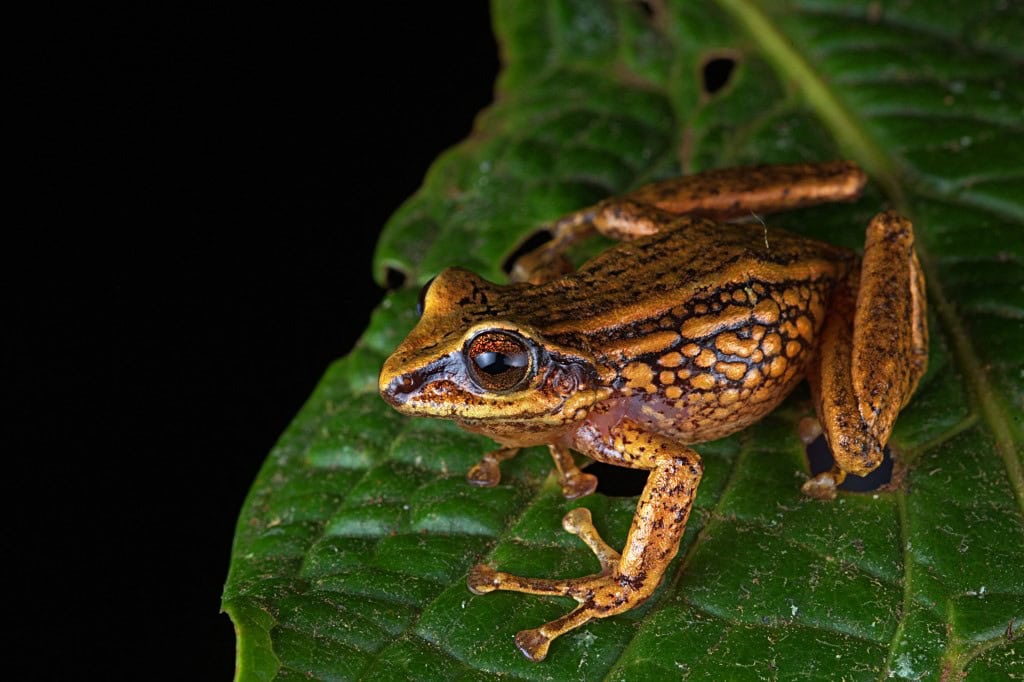A team of Peruvian scientists recently identified three new frog species in the misty peaks of the Huancabamba mountain range in northern Peru’s Piura region, according to the Peruvian Institute of Herpetology. Named Pristimantis chinguelas, Pristimantis nunezcortezi, and Pristimantis yonke, these amphibians add to the already diverse Pristimantis genus, which boasts over 600 species across Central and South America.
The frogs, each about five centimeters long, were spotted during nighttime expeditions between 2021 and 2024 in forests sitting 2,000 to 3,000 meters above sea level. “We found these species in areas rarely explored,” said lead herpetologist Germán Chávez. “The Huancabamba range is a hotspot for unique wildlife, connecting the Amazon to the Pacific coast.”
Their high-pitched calls and striking features—like large yellow eyes and cream, yellow, or brown skin with tubercles or black blotches—set them apart from known relatives. Pristimantis chinguelas, for example, was found clinging to mossy cliffs at Cerro Chinguelas, while Pristimantis nunezcortezi lives near cool streams in recovering forests, marked by distinct black groin patches.
These frogs don’t need standing water to breed, laying eggs in moist soil or plants, which makes them excellent indicators of their habitat’s health. “Their presence tells us the ecosystem is still intact,” Chávez noted. The team confirmed the species through DNA analysis, morphology, and bioacoustic studies, showing over 3% genetic difference from their closest kin. Their findings appeared in the journal Evolutionary Systematics in June 2025.
The Huancabamba range, with its fog-drenched dwarf forests and quiet páramo highlands, is a biodiversity treasure. Yet, it faces serious threats. Agricultural burning, deforestation, and climate shifts endanger the frogs’ small habitats. Pristimantis chinguelas occupies less than four square miles, and only two Pristimantis nunezcortezi have been found at one site. “We’re racing against time,” Chávez said. “These frogs could vanish before we learn more about them.” The species are currently listed as “Data Deficient” on the IUCN Red List, meaning more research is needed to assess their survival odds.
The discovery highlights how much remains unknown in the Andes. “This range is like a living archive,” said co-researcher Wilmar Aznaran from the Instituto Peruano de Herpetología. The team trekked five to six hours each night, scanning vegetation and streams with headlamps. Their persistence paid off, but they stress that more surveys, especially in the dry season, are needed to protect these fragile ecosystems.
One species, Pristimantis nunezcortezi, honors Elio Iván Núñez Cortez, a conservationist who championed the Huancabamba region. The findings underscore the need to preserve this rugged landscape, which not only supports unique wildlife but also holds cultural significance for local communities. As Chávez put it, “Every new species we find is a reminder of what’s at stake.”
For more on this discovery, check the study in Evolutionary Systematics or follow updates from the Peruvian Institute of Herpetology.






